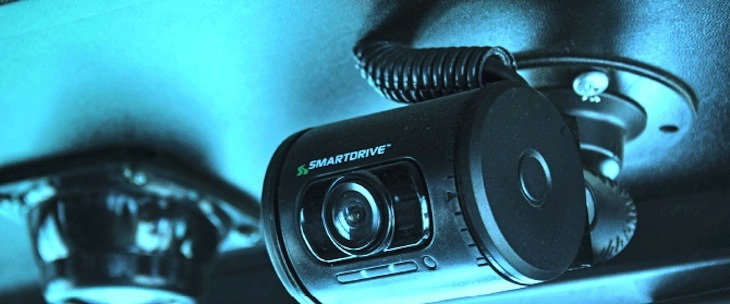Most crashes aren’t caused by truck drivers, in-cab cameras could exonerate them
by November 20, 2017 3:29 pm 1,022 views

While electronic logging devices have held the technology spotlight recently, in-cab cameras have begun to tap the industry on the shoulder. As new systems are added to big rigs and the technology becomes increasing more complex, they require more attention from the driver, but in-cab cameras might keep drivers on the road and carriers out of the courtroom.
Truck drivers often are not the cause of crashes, and evidence shows cameras would only help to back up that fact, said Jay Starrett, trial attorney for Scopelitis, Garvin, Light, Hanson & Feary, which specializes in transportation law. Recently, Starrett was featured in a Transport Topics webinar on the benefits of video.
“Currently we are in a plaintiff favorable cycle,” Starrett said. “The trucking industry is a significant target of the plaintiff bar.” Monthly conferences take place on “how to take down” trucking companies and their insurers. Insurance companies charge a “fairly large premium” per truck, and “it doesn’t take very many bad accidents to wipe out those premiums.”
The makeup of juries has led to changes in how plaintiffs are awarded in lawsuits involving crashes and trucking companies.
“Millennials see nothing wrong with economic redistribution,” he said. The company’s insurance coverage can cover it so “why not take that money and give it to the plaintiff.” Also, medical costs have risen “dramatically,” increasing more than profits. “It’s not difficult to get to $500,000 in medical expenses.”
Companies are “almost always better served” if they can move the case to federal court, Starrett said. Trucking companies have often pushed back, and instead of settling, have gone on to fight the case in court but found the case had “a lot more value” than they previously thought.
While cameras can keep drivers and carriers out of the courtroom, they also can be used as a teaching tool, he said. Carriers that place cameras on trucks increase the consciousness of drivers. Starrett compared the use of video cameras to the engine control module (ECM). After it was added to truck engines, its data was used to show the driver was operating the vehicle property.
“Videos exonerate truckers more often than not,” he said.
And if the video shows the truck driver is at fault, the company can focus on “how much” and move on to business.
Some of the concerns with the cameras included how video is saved in the event of a lawsuit. Carriers need to have a policy in place for when to destroy video evidence in order to prevent spoilage. Another concern was whether independent contractors could be deemed an employee of the company if using in-cab cameras.
Carriers need to have someone in the company assigned who can present the video, but they don’t need to understand how the video was captured. This would be a task for the video equipment provider to show a jury, not the carrier. Carriers that have some trucks with cameras and some without are not in violation. Fleets might choose to equip half their fleet one year and the other half the following year, but federal rules don’t require video equipment, he said. For independent contractors, he suggested they purchase the video equipment in order to keep them from being suspected as employees.
Matt Brunelle, vice president of customer success for SmartDrive, said the video equipment provider can offer a system to review and prioritize video that’s captured and record a greater amount of video to allow for more context of an event.
Barrett Welch, corporate counsel for SmartDrive, said video evidence the cameras capture can help determine a settlement range if a driver were at fault. Video also can eliminate the he said, she said, and increase the speed at which claims are resolved.
Companies must determine who can access the video that’s captured on the cameras, but it is typically the safety manager and managers who coach drivers, Brunelle said. When asked if a company needs written permission from drivers to use the cameras, Starrett said no, but recommended speaking to an employment lawyer on whether companies are required to notify drivers in advance.
If making the switch to in-cab cameras, companies should engage the drivers “early on throughout the process,” said Brunelle in response to addressing driver push back. Starrett said explaining the statistics on accidents might help drivers to “buy into” using the cameras. Between 67% and 68% of all accidents are the fault of the motoring public, not truck drivers.
However, sometimes drivers are negligent, and if a driver has received coaching and continues to have problems, the plaintiff could use that against a company and say the company knew the accident was going to happen, opening up the company for “punitive damages,” he said.
Welch suggested companies establish policies and next steps after drivers are coached.
